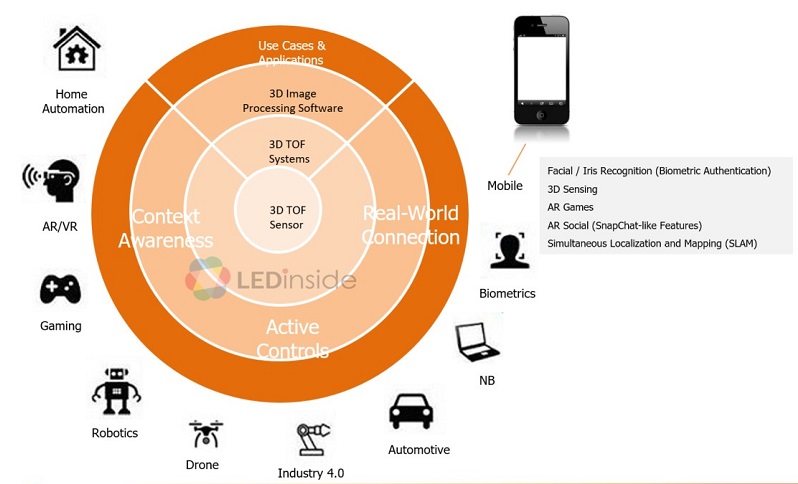VCSEL (vertical-cavity surface-emitting laser) technology has been at the center stage in the tech world of late, in the wake of the debut of the new iPhone X, which contains a 3D sensing module with VCSELs as its core components. Their importance even made Apple fork over quite an amount of money to secure some of the VCSEL shipment from Finisar, a laser chip producer.
The strong support of Apple has made VCSEL a shining star in the tech world, although it, an infrared laser technology, is by no means a new technology, with its birth dating back to the 1980s and commercialization in 1996.
Dissection of infrared laser and VCSEL technology
Compared with infrared LED, infrared laser boasts the merits of resonant cavity design, small angle for light divergence, high light-power conversion efficiency, and rapid data transmission. It is harmless to the eyes, thanks to the employment of pulsed light in product design. Along with technological progresses, infrared red laser has been increasingly applied in sensing components, with its application having been extended from industrial use to commercial and consumer markets.
Types of infrared laser contain VCSEL and EEL, with the former possessing the advantages of the potential of low critical current, optical beam featuring round symmetry, high light-power conversion efficiency, and lighting source with coherence and high directivity.
VCSEL has tremendous potential in the consumer and auto markets
In recent years, VCSEL has been increasingly applied in the consumer market, including distance sensing, autofocus, 3D sensing (structured light and time of flight), iris recognition, and air- and water-quality detection. Among them, the application fields of 3D sensing include residential automation, robot, wearables, computer, gaming, TV, vehicles, biological recognition, and wearables.
In addition, VCSEL can remove speckles, has a symmetric round beam facilitating control of lighting angle via lens, and can offer high-resolution image for auto night-vision lighting, promising considerable potential for auto application.
 |
|
(Image: LEDinside) |
Algorithm and alliance critical for 3D sensing market
According to LEDinside under TrendForce, a VCSEL supply chain has been taking shape, with upstream infrared laser epitaxy chip suppliers including IQE, II-VI, Epistar, HLJ, Win Semiconductor, and Advanced Wireless Semiconductor, and infrared laser suppliers, such as Lumentum, Finisar, Princeton, Optronics, NeoPhotonics, Philips Photonics, and OSRAM OS.
Despite surging demand in the wake of the rollout of iPhone X, VCSEL needs extremely reliable technology, given high sensitivity of infrared laser products to temperature, as rise in temperature will result in large-scale light attenuation. Product life and quality reliability constitute major impediment to improvement in yield rate, a major cause for insufficient supply for VCSEL applied in mobile phones now.
On the heels of Apple, other major mobile-phone brands have started allying with suppliers for formation of supply chain but they are faced with patent barrier for algorithm, which, along with development of third-party Apps and the enhancement of the performance/price ratio of 3D sensing modules, will be critical for the deployment and development of VCSEL firms in 2018.












